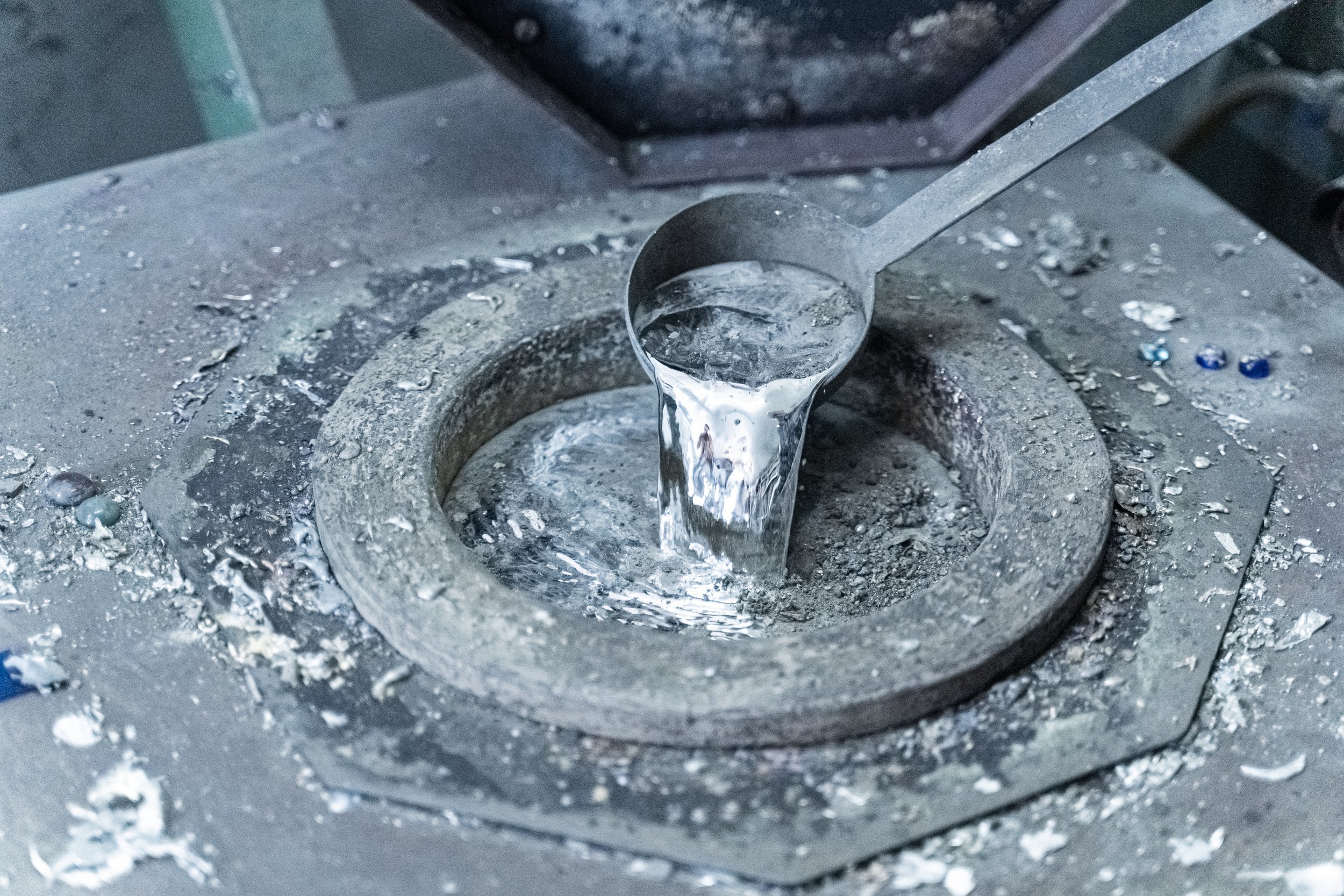Pewter Caster Robert Chlada - Guardian Of An Ancient Craft
Nestled on the outskirts of Vienna, amidst stately bourgeois residences, lies a small, ivy-covered building dating back to the Gründerzeit era. This unassuming structure serves as the workshop of Robert Chlada, a master in the age-old craft of pewter casting. Stepping inside, one is transported to a bygone era, where ornate ceilings and wall panels hearken back to the opulent homes of the 1920s.
Chlada's workshop is a place where history and artistry converge. Each room reveals a different facet of his craft and passion. One is adorned with antique picture frames and icons, relics of yesteryears. The north wall of the courtyard showcases the alchemical process of pewter casting through a series of images and Latin inscriptions. In another room, faded pages from an Austrian novel serve as wallpaper. Over time, this home has seamlessly transformed into a workshop, now housing an array of both vintage and contemporary pewter casting molds neatly arranged on shelves.
Pewter objects cast by Robert Chlada are renowned for their distinctive silvery luster. The production process commences with the meticulous creation of casting molds by hand. Some of these molds are more than six decades old, and their associated products are crafted in limited quantities, making each piece a unique work of art. Variations from the model photo are emblematic of the artisanal quality. All products undergo rigorous selection and scrutiny by art historian Kristian Stankov and designer Marielle Plößl.
Exploring the Region
This charming workshop, once a family home and a foundry, stands as a testament to a rich history. The family patriarch, who previously ran the workshop, honed his skills at the iconic Hagenauer workshop in Vienna. In 1960, Robert Chlada established his own independent foundry. Over the last six decades, the workshop has accumulated hundreds of models and casting molds, many of which are still in use. These molds reflect the evolution of contemporary tastes and the personal inclinations of various artists.
While his father embraced the post-modern style, Robert Chlada draws inspiration from the classical designs of Vienna's Modernist movement around 1900, infusing them with contemporary elements. His unique creations blend innovative character with the centuries-old tradition of the region from which they originate.
The artistic excellence of Chlada's products has ensured the survival of the workshop. It has long set itself apart from competitors, outlasting them all. Today, it stands as one of the last bastions of this traditional craft, eagerly awaiting the next resurgence of pewter art.
The Artisan Behind It All
Robert Chlada's love for his craft began in childhood, when he would secretly tinker with pewter in the workshop. In addition to his pewter casting, he is deeply passionate about the Far East, theology, and alchemy, drawing inspiration from these interests for his creations.
Most of the designs are of his own creation, some inherited from his father. He is heavily influenced by the Vienna Modernist movement, particularly the design language of Josef Hoffmann and Dagobert Peche. In the true spirit of Art Nouveau, he draws inspiration from the organic forms of nature, such as the Marina Anemone coaster, inspired by an early 20th-century encyclopedia.
Robert Chlada's works are a true embodiment of Viennese tradition. They merge the artistic legacy of the region with a craft that few still master. Robert Chlada stands as one of the last keepers of the knowledge of pewter casting, which imparts a unique character to his creations.
A Legacy of Tradition
The mesmerizing gleam of pewter surfaces has captivated humanity since ancient times, making it one of the oldest metals to be worked with. Its use in everyday life quickly gained popularity in the Middle Ages, offering an affordable alternative to the expensive silverware of the period. Pewter tableware soon became a status symbol, gracing noble banquet tables. However, the advent of new ceramic firing and painting techniques gradually displaced pewter utensils, with the discovery of porcelain marking a definitive change in European table culture.
Nevertheless, the 19th-century artists rediscovered the virtues of pewter for their works, sparking a revival of this craft. In addition to its subtle luster, pewter's ability to faithfully replicate fine details made it especially appealing to Art Nouveau artists, who found inspiration in organic natural forms. The history of pewter embodies cycles of enthusiastic and imaginative application, followed by periods of obscurity. Only thanks to the few guardians of its processing secrets has this tradition survived into our time, with just a handful of them remaining today.




